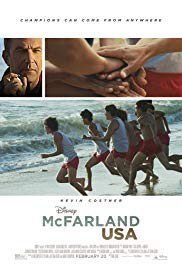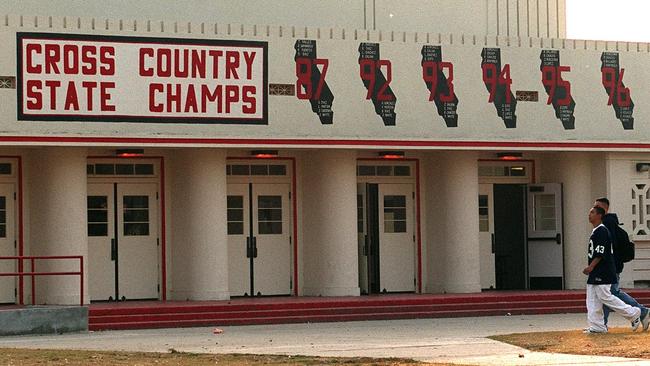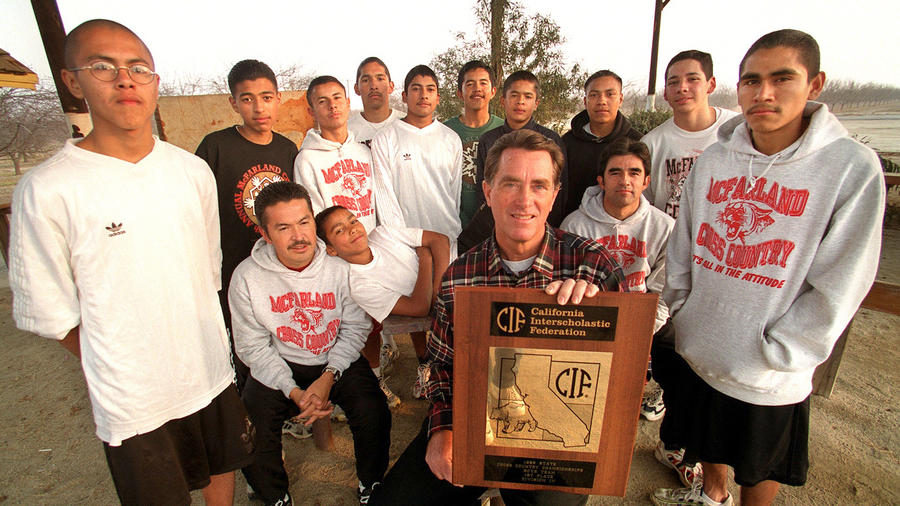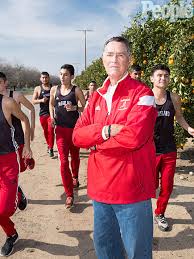After showing the film to students, engage the class in a discussion about the movie.
1. What did you learn from this movie other than from the character of Coach White? We’ll get to Coach White in a minute.
Suggested Response:
There is no one correct response. A good way to organize the responses is that they will be either about young people, Mexican-Americans, or about the country as a whole. Good responses include: 1) farm labor is very, very hard; 2) if you apply yourself, you can achieve great things; 3) families should stick together, even in hard times like the families of the workers and the coach’s family; 4) there is a great value in Hispanic culture, especially in the strength of the family; 5) our country works best when there we accept people of all different cultures and combine together to be Americans, like coach White and his students.
2. How would you describe the character of Coach White in the film, not the real Coach White but the character who was invented by the scriptwriters?
Suggested Response:
There are many ways to say this. The Coach White character didn’t give up when he was down. He kept on trying. After throwing the shoe at the insolent student, he treated everyone with care and respect. He was able to admit his mistakes even to others and try to do better.
3. Which brand-named product was featured in this film? In which scenes is it shown? How is this designed to influence your buying decisions?
Suggested Response:
It seems to be Coca-Cola. Mr. White is seen drinking it at least twice. On one of those occasions, is dehydrated and needs something to re-hydrate himself. There are many products, including water, which would have been better for this purpose and less harmful than Coca-Cola.
4. What is the most remarkable thing about the story of the McFarland High School Cross-Country Team, the coach or the success of the boys who have made up the teams?
Suggested Response:
They are both quite remarkable. The coach is a role model for a great teacher. He gave of himself, fully, year after year, with sensitivity and insight. The fact that the boys were able to learn and profit from his coaching and that many of them went to college and later worked in jobs their parents could only dream about, is the most important story. Hopefully, this type of inspiration of young people is something repeated in the U.S. and other countries in sports and education year after year.
5. What did the boys learn from their experience running for the McFarland High School Cross-Country Team?
Suggested Response:
They learned the value of discipline and that with hard work they could compete with and beat students from wealthier and more privileged backgrounds.
6. This movie has been criticized as being another in the long line of “White Savior” movies, in which minorities benefit from the intervention of whites. What is your reaction to this criticism?
Suggested Response:
First, it is true that the real Coach White was a facilitator by which the boys saved themselves. No one made those boys run mile after painful mile in the blistering heat. The point is, you cannot save anyone who doesn’t want to be saved. The savior is only the facilitator. The true hero is the person who takes the facilitator up on his offer and does the hard work. An interesting thing about this story with the fictional Coach White is that the boys saved him, as much as he saved them. So, it’s not a classic “white savior situation.”
A Reflection on non-White saviors in American History Dr. Martin Luther King and Cesar Chavez are both non-white saviors of white Americans. Dr. King and the Civil Rights Movement, awakened the conscience of America to its own racism and the evils of segregation. He (and the Movement) were the facilitator for the recognition by whites that they had to change, that they had to improve themselves, that we had to improve as a country. Cesar Chavez facilitated the recognition that conditions for farmworkers were terrible and had to improve. Of course, the removal of racism and improvements for the farm workers are not complete efforts, there is some backsliding, but things have improved substantially in both of those areas from where they were before Dr. King and Cesar Chavez performed their facilitating, i.e., saving, work. And again, the extent that positive changes were made, the American people had to do the work within themselves to change.
7. What is responsible for the fact that this one small high school, year after year has so many good long distance runners?
Suggested Response:
There is no one correct answer of which TWM is aware. However, strong responses will include the following: long-distance running is a sport of endurance, where the athletes must endure fatigue and pain; the success of these students appears to be based on superior training (the consistent practices and the summer running, for example) and the fact that their tedious, hot, and painful work in the fields, hour after hour, forced them to learn how to endure physical discomfort; this combined with the natural talent of some of the runners seems to have made the teams successful.
See Discussion Questions for Use With any Film that is a Work of Fiction.





